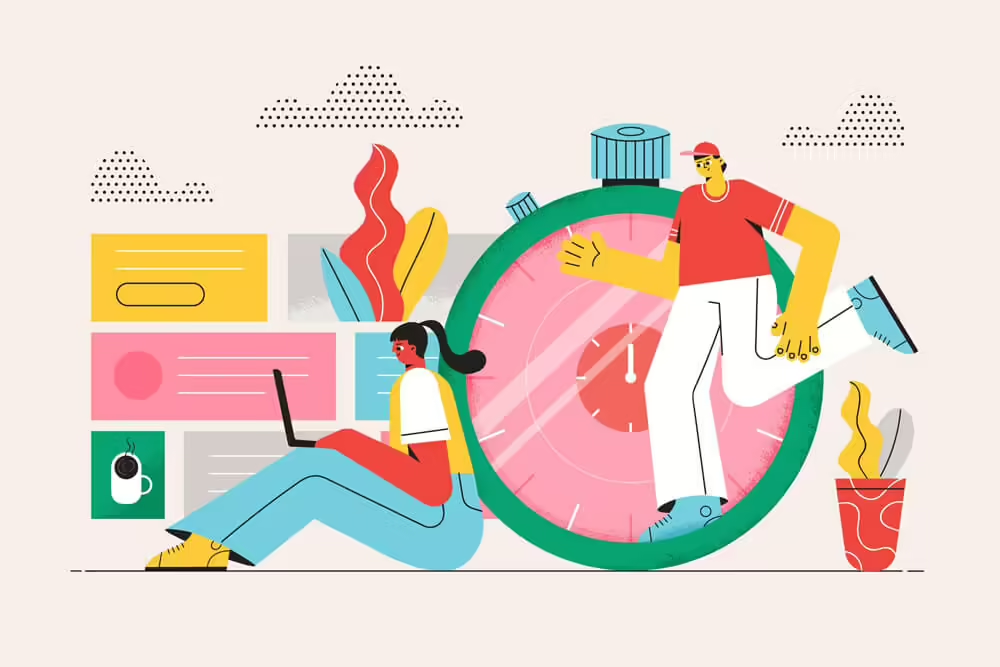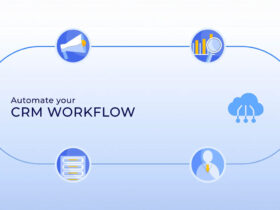If you have a hectic lifestyle with many work and personal tasks, it can seem tough to manage everything. Being proactive with your time can help you save time both at work and at home. So, do you know how to save time at work?
By using effective time-saving strategies, you can reduce stress and become more productive. In this article, we share 12 easy ways to save time every day. Let’s explore!

12 Effective Ways to Save Time at Work
Creating simple routines and habits can help you save time at work and in your personal life. Try out different time-saving techniques to see which ones work best for you. If you don’t know how to save time at work, here are some ideas:
Use Task-management Software

Task-management apps are excellent for organizing your responsibilities and tasks on the go. These smartphone apps can help you manage work tasks, meetings, and other obligations. By syncing with your email account and calendar, they provide timely reminders to keep you ahead of deadlines and save time.
Call People Before Meeting

Call people before a meeting to check if they are still attending and if they have any agenda items. (Need a template? Grab a meeting agenda template here.)
If decisions need to be made, discuss the options with them and get their informal opinions on the best way forward.
This takes a bit of time upfront but saves a lot more time during the meeting. With the information gathered, you can prevent conflicts and help the group reach a decision faster.
Use Templates
I never start a project document from scratch. There’s always something to build on.
Templates can be used for more than just project documents. You can find templates for project plans, project management software tools, reports, and more, all of which help save time.
For instance, customizing SharePoint sites for project and portfolio management can be time-consuming. Whether you’re managing tasks as a project team member or handling multiple projects in the Portfolio Office, using templates can save you a lot of time by enhancing SharePoint beyond its default settings.
Batching Tasks

Switching between tasks isn’t productive because it takes time to wind down one task and start another. Task switching kills productivity and wastes valuable time.
Batching tasks means working on multiple things that require the same tools or skills at the same time. For example, part of my job is supporting corporate clients with project management content for their websites. This includes writing, creating graphics, and occasionally making short videos.
Video work is easy to batch. I need to produce a video for a client once a month, but setting up the camera for just one recording seems inefficient. So, I record three or four videos at once because it saves time on setup and takedown.
I apply the same strategy to emails: I block out a morning or evening to focus solely on emails. You can do this with any similar task. Blocking meetings is another good example. Here are other tasks you can batch:
- Returning phone calls
- Filing
- Completing project reports for multiple projects
- Completing timesheets for multiple projects
- Providing feedback or saying thank you to team members
I teach strategies for batching tasks in my course on managing multiple projects. There’s a free webinar on the essential skills for juggling several projects at once that you can watch to learn the basics.
Control Your Energy

Tackle the most difficult tasks on your To-Do list when you have the most energy.
This isn’t just a productivity hack; it’s about understanding and respecting your body’s natural rhythms. Your mental energy might peak in the morning, like mine, or you might find you focus better in the evening. Some people experience a dip in attention after lunch.
Start tracking your time or use a time management app to monitor how you spend your time for a week. This will help you identify your most productive periods and spot any drops in productivity.
During lower-energy times, handle easier tasks like returning phone calls, filing, or other low-effort jobs. Reserve your high-energy times for more complex tasks, such as troubleshooting issues in your scheduling tool.
Write Reports When You Go

This tip saves me time.
I take last week’s (or last month’s) project report and save it with the name and date for the next report. Then, I highlight all the text that needs changing or updating in yellow. Throughout the reporting period, I regularly update the document—sometimes keeping it open all the time—to add in things that need to be reported.
For example, if I add a new risk to the risk register that is significant enough to be included in the report, I add it to the report immediately.
By the end of the reporting period, there might still be some highlighted sections that need updating or removal, but most of the updates will be done. This way, I won’t struggle to remember significant events.
Consolidate Notifications
I can’t handle managing app alerts from Slack on my iPad, Facebook messages on my phone, and desktop alerts for meeting appointments.
My inbox is where I spend most of my time. One of my best time management techniques is consolidating all important notifications into my inbox, so I only have one place to check. You can either consolidate your notifications or turn them off.
You don’t have to use your inbox. You can forward notifications to Slack using various integrations or choose another workflow that suits you. The key is to reduce the noise by consolidating notifications.
Turn Off Pop Ups

Like with notifications, turning off pop-ups helps minimize distractions. This allows you to focus better. Disable the pop-up in Microsoft Outlook (or whatever email client you use) that alerts you to new mail. Also, turn off other pop-ups, such as Skype notifications or antivirus messages, by adjusting the app settings.
An added benefit is that you won’t have notifications popping up when you’re trying to show someone something on your computer. Trust me, they won’t be able to resist reading your alerts and messages.
Delegate Tasks
Trying to do it all will lead to burnout. Delegate as much as you can to as many people as possible. Learn to say no often.
Delegating urgent tasks can be tough because finding someone and explaining the task might take longer than doing it yourself. Instead, delegate routine activities like updating project management tools or handling daily tasks.
Use Email Mailing Lists

I maintain standard lists of people to contact each week. These include recipients of various reports, project team members, Steering Group members, wider stakeholders, and those who receive the project newsletter.
I can’t remember all these names and I understand the consequences of accidentally leaving someone out.
To manage this, I use email mailing lists. Some are created directly in Outlook, allowing me to use a short name to call up the list. Others are kept in Excel, where I can easily copy and paste the names. This method is particularly useful for a user group that changes almost every week, as it’s easier to add and remove members in a spreadsheet than in Outlook’s email list function.
Use Checklists
This tip helps you stop relying on your memory and allows you to systemize more of your tasks.
Use checklists for various activities: meeting preparation, packing for business trips, finishing a project stage, starting a project, and more.
If you perform these tasks routinely, a checklist can help you work through the steps more quickly and with less stress.
Get Enough Rest

Finally – and I know this sounds counter-intuitive in an article about getting things done faster – take a break. Have a lunch break. Go for a walk.
You’ll come back refreshed, with more energy and a clearer mind to face the rest of the day. Even a short break away from the screen can help. Get a coffee, chat with a colleague, and ideally, get some fresh air if you can.
Regular breaks truly boost productivity. Reflective focus and letting your mind wander can help you solve complex problems. Try it — it really works.
Do you know how to save time at work? I hope from the 12 solutions I mentioned above, you can choose the most suitable one for you and your employees.









